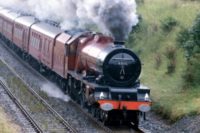An ongoing investigation into an October 4, 2018 train collision that claimed the lives of two railroad employees has resulted in calls for greater scrutiny of train air brakes by the National Transportation Safety Board (NTSB).
That key piece of equipment was singled out in a report issued by the agency last week about the Granite Canyon, Wyoming incident.
An engineer and conductor were killed when the Union Pacific (UP) freight train they were in descended a hill at 50 miles per hour struck the rear of a stationary UP freight train. The crew of the striking train, which consisted of 3 leading locomotives and 105 railcars, had radioed the UP Harriman Dispatch Center to say they were having problems with the air brake system and were unable to stop the train.
The NTSB has issued several safety recommendations:
To the Class I Railroads:
Review and issue guidance as necessary for the inspection of end-of-railcar air hose configurations to ensure the air hose configuration matches the intended design. (R-19-41)
Review and revise your air brake and train handling instructions for grade operations and two-way end-of-train device instructions to include: monitoring locomotive air flow meters, checking the status of communication between the head-of-train and end-of train devices before cresting a grade, and the actions to take if the air pressure at the rear of the train does not respond to an air brake application. (R-19-42)
To the American Short Line and Regional Railroad Association:
Alert your member carriers to (1) inspect the end-of-railcar air hose configurations to ensure the hose configurations match the intended design and (2) review and revise their air brake and train handling instructions for grade operations and two-way end-of-train device instructions to include: monitoring locomotive air flow meters, checking the status of communication between the head-of-train and end-of-train devices before cresting a grade, and the actions to take if the air pressure from the rear of the train does not respond to an air brake application. (R-19-43)


